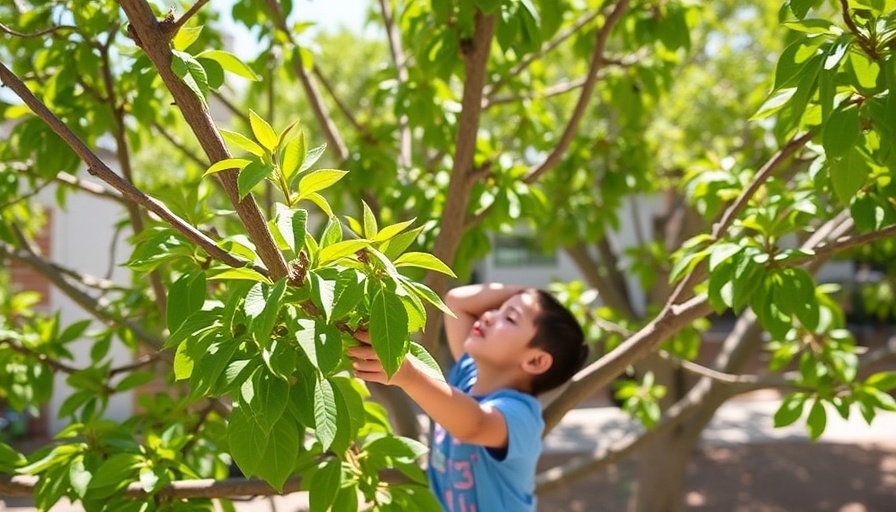
Planting Seeds of Change: How Trees Transform Educational Spaces
In a remarkable initiative aimed at enhancing childhood development, Washington Elementary STEM Magnet School in Pasadena, California, is leading the charge in a movement to green urban schools. Recently, volunteers from Amigos de los Rios came together to create a vibrant outdoor space filled with native plants, pollinator gardens, and essential shade, all vital for nurturing healthy kids. The transformation of this Title I school, which primarily serves Latino and Black students from low-income households, represents an innovative intersection of education and environmental justice.
Addressing Environmental Injustice Through Green Spaces
It’s no secret that parks and green spaces profoundly influence children’s physical and mental well-being. However, in Los Angeles County, a staggering reality unfurls: unequal access to these vital resources. Approximately 20% of the city's tree canopy is concentrated in just a few affluent neighborhoods, while millions of residents remain underserved. Research indicates that over 2.5 million students attend schools lacking adequate tree cover, failing to meet expert recommendations of 30% to 50% shaded coverage. This disparity is tied to historical injustices like redlining, revealing a need for urgent action to bridge the gap.
Envisioning a Greener Future: What It Means for Students
Amigos de los Rios aims to counteract the effects of decades of environmental neglect. According to the organization’s managing director Claire Robinson, “Green spaces make a huge difference in what you become and what’s available to you.” As they continue greening schools across Los Angeles, they recognize the vital role these initiatives play not just in beautifying the environment, but in fostering opportunities for intrinsic growth among children in underrepresented communities.
Environmental Impact: A Long-Term Investment in Community Health
The newly planted trees and gardens at Washington Elementary serve as more than aesthetically pleasing features; they represent an investment in the health and resilience of the community. Studies have shown that children exposed to green environments tend to experience better physical health, improved concentration, and heightened creativity. As climate change intensifies the frequency of heat waves and the risk of wildfires, the importance of these initiatives becomes even more crucial.
Connecting with Local Initiatives: How You Can Help
For homebuyers and sellers in the Dumfries market, understanding your local landscape is essential. Supporting community-focused environmental initiatives, such as tree planting and school garden projects, can enhance not only the ecological health of the neighborhood but also potentially increase property values. Engaging with projects like Amigos de los Rios provides an opportunity to invest in lasting change.
Join the Movement: The Call for Action
As climate challenges continue to unfold, there is an urgent need for greater community engagement in greening initiatives. Whether it's volunteering time, donating resources, or advocating for policies that promote equitable access to green spaces, every action counts. It’s a community endeavor that can enrich the lives of future generations. So let's come together and contribute to a greener, healthier planet for our children!
 Add Row
Add Row  Add
Add 





Write A Comment